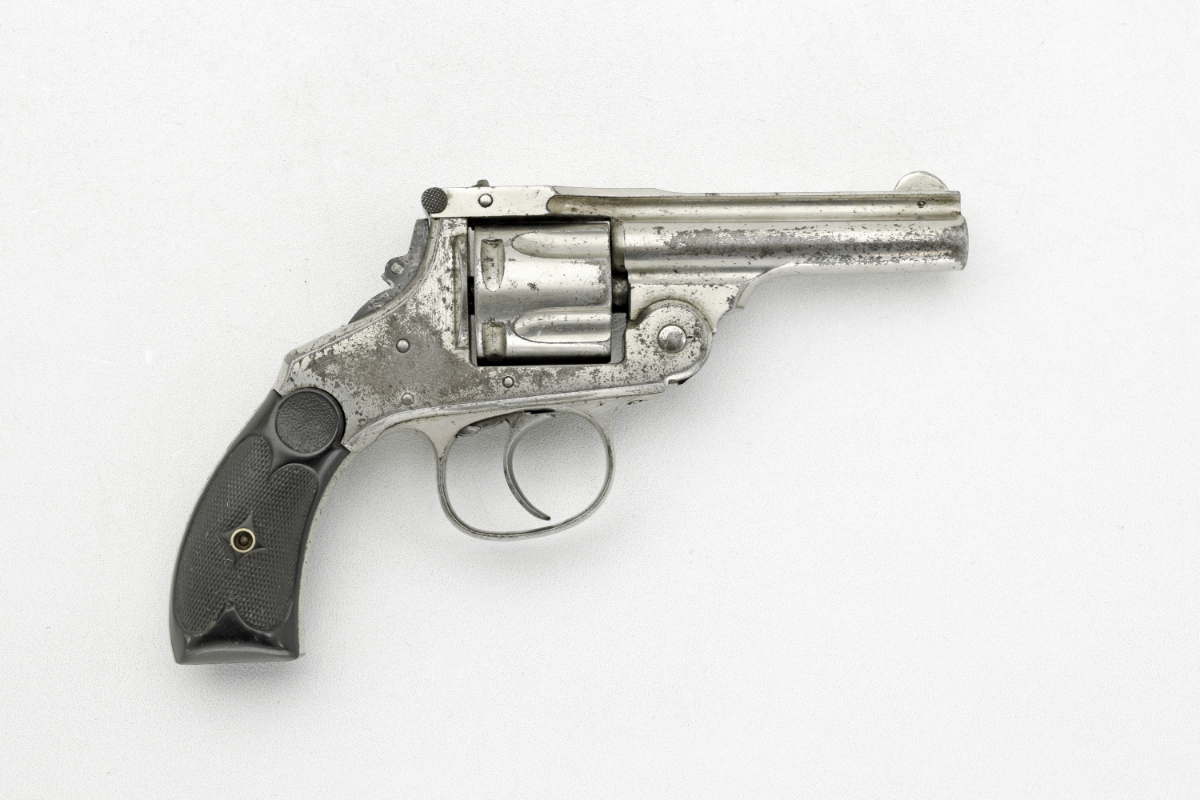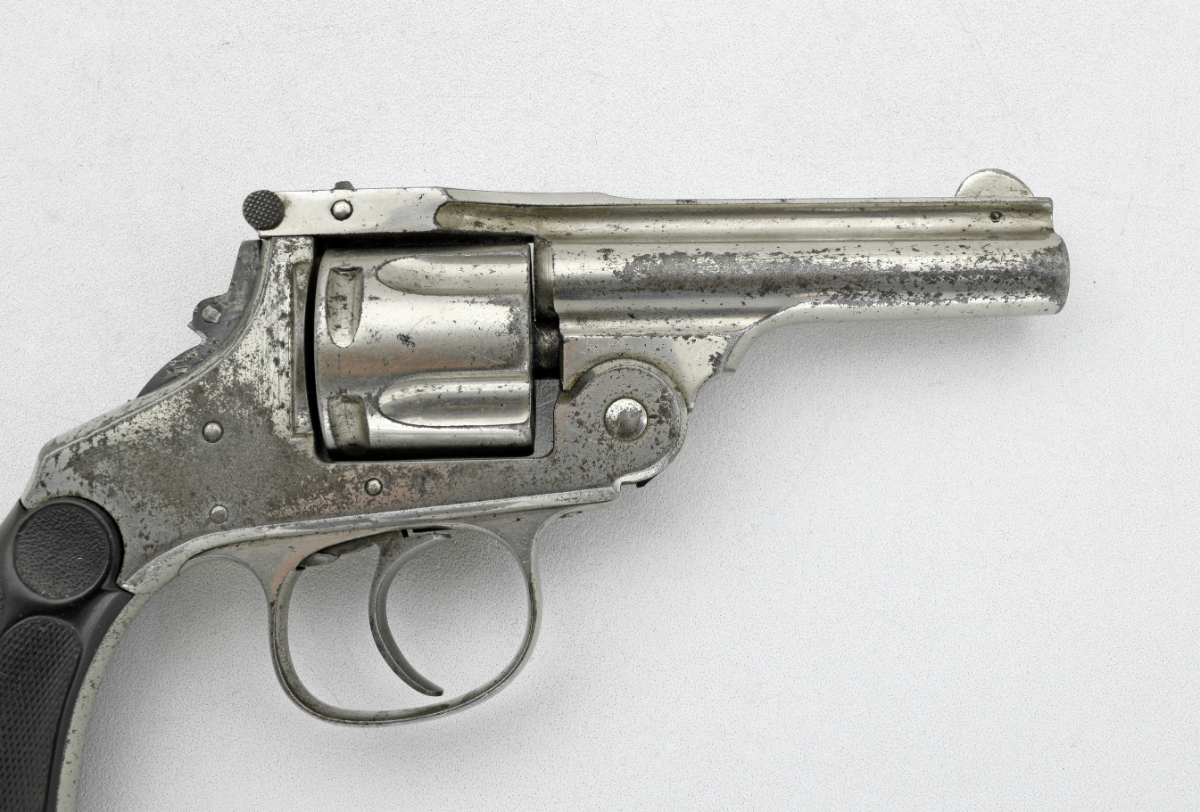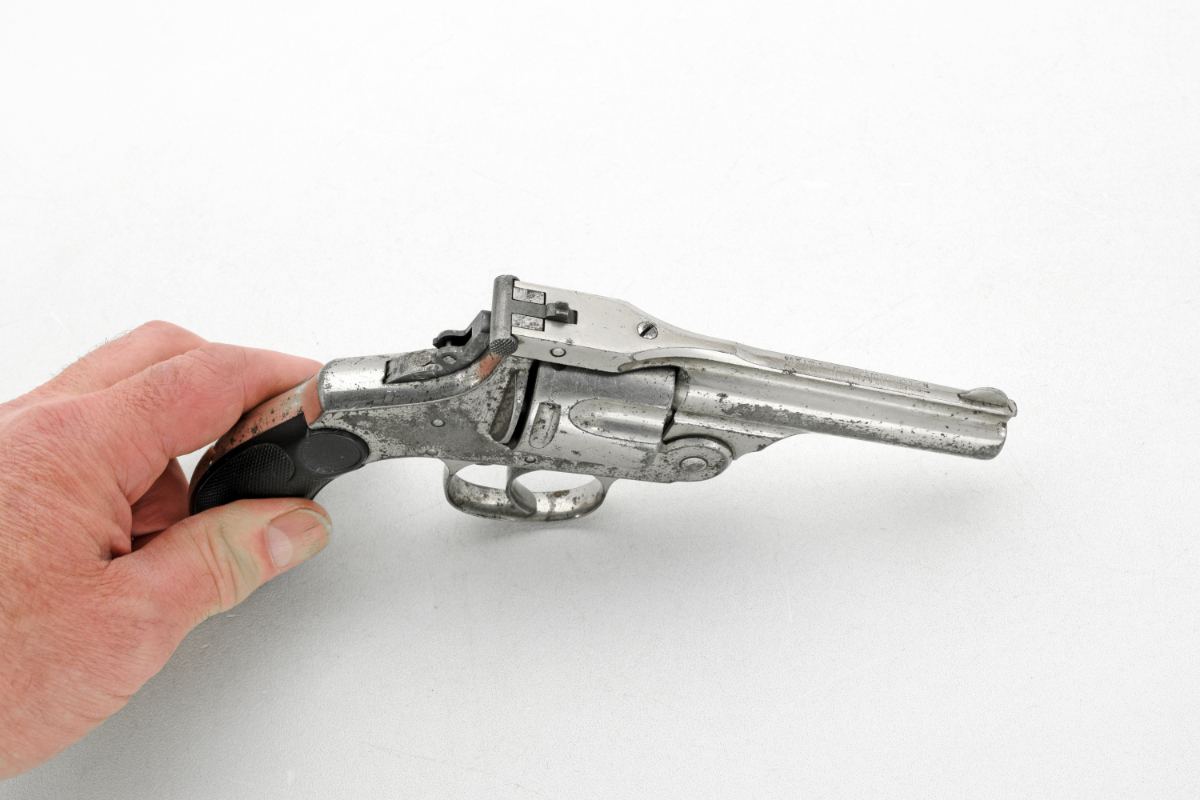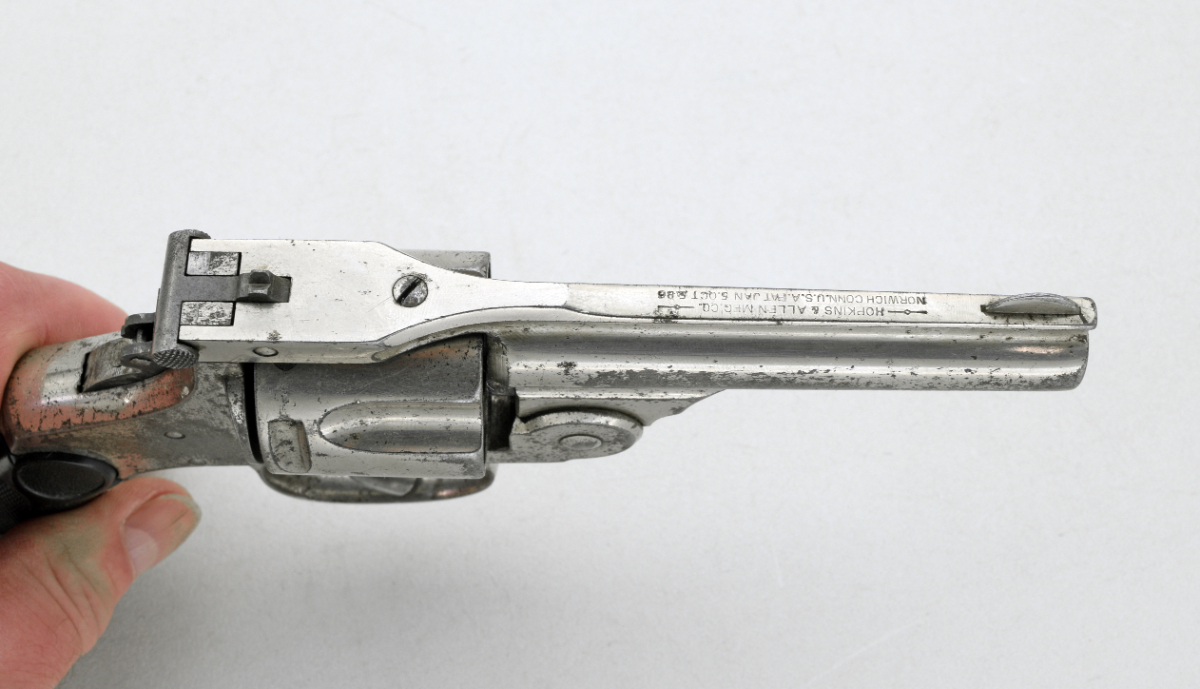“A product demonstrator at the Las Vegas SHOT Show was speaking of a competitor’s product: ‘When their part was installed, the guns went civil service in under 1,000 rounds.’ After he used this term a few times, an audience member asked what he meant. The instructor replied with a smile: ‘The gun went civil service. That means it won’t work, and you can’t fire it’.” — Anonymous
“Andersen’s (?) Law of Survival for Low-Level Managers: “Never be right too often.” — Anonymous
“Blair’s (?) Observation: The best-laid plans of mice and men are about equal.”
A variation on a verse by Robert Burns in his poem, To a Mouse: “The best laid schemes o’ mice an’ men Gang aft a-gley.”
“Those who have given themselves the most concern about the happiness of peoples have made their neighbors very miserable.” — Anatole France, Nobel-Prize-winning French author (1844–1924)
“The angels take no interest in the sports of man, save archery.” — Persian saying
“Experience is not what happens to a man; it is what a man does with what happens to him.” — Aldous Huxley, English writer and philosopher (1894–1963)
“If you are guided by opinion polls, you are not practicing leadership—you are practicing followship.” — Margaret Thatcher, prime minister of the United Kingdom, known as “The Iron Lady” (1925– 2013)
“Just be thankful we’re not getting all the government we’re paying for.” — Will Rogers, American vaudeville performer, actor, columnist, humorist, and social commentator (1879–1935)
“Politics is supposed to be the second-oldest profession. I have come to realize that it bears a very close resemblance to the first.” — Ronald Reagan, 40th president of the US (1911–2004)
“When there is lack of honor in government, the morals of the whole people are poisoned.” — Herbert Hoover, American politician and engineer, 31st president of the US during the Great Depression (1874–1964)
“A society grows great when old men plant trees whose shade they know they shall never sit in.” — Greek proverb
“When liberty becomes license, some form of one‑man power is not far distant.” — Theodore Roosevelt, 26th president of the US, author, recipient of the Congressional Medal of Honor, and pioneering conservationist (1858–1919)
“Give the vote to the people who have no property, and they will sell them to the rich, who will be able to buy them.” — Gouverneur Morris, the author of the Preamble to the US Constitution and Founding Father (1752–1816)
“Scientifically, a raven has seventeen primary wing feathers, the big ones at the end of the wing. They are called pinion feathers. A crow has sixteen. So, the difference between a crow and a raven is only a matter of a pinion.” — Anonymous
“Whoever said you can’t buy happiness forgot about puppies.” — Gene Hill, American author and outdoors columnist (1928–1997)
“I’m all in favor of the democratic principle that ‘one idiot is as good as one genius,’ but I draw the line when someone takes the next step and concludes that ‘two idiots are better than one genius’.” — Leo Szilard, Hungarian-German-American physicist and inventor, holder of the patent on the nuclear fission reactor, collaborator with Albert Einstein (1898–1964)
Szilard was one of the five, Jewish-Hungarian scientists known as “The Martians.” Someone once remarked that the only explanation for five geniuses originating from the same small part of Hungary at the same time was that they were all really Martians and chose Hungary because the language was about as intelligible as Martian. I first read this anecdote in The Making of the Atomic Bomb by Richard Rhodes et al. Highly recommended.
“Wisdom is the right use of knowledge. To know is not to be wise. Many men know a great deal, and are all the greater fools for it.” — Charles Spurgeon
“Never argue with an idiot. They will drag you down to their level and beat you with experience.” — Mark Twain, American writer, humorist, entrepreneur, publisher, and lecturer (1835–1910)
“I cannot give you the formula for success, but I can give you the formula for failure, which is—try to please everybody.” — Herbert Bayard Swope, American editor and journalist (1882–1958)
“A recent traveler returning from Pakistan reports that there is no racial discrimination in that country—only a good deal of ethnic homicide.” — Jeff Cooper, Lt. Colonel of Marines and the father of modern practical shooting (1920–2006)
“Masculine republics give way to feminine democracies, and feminine democracies give way to tyranny.” — Aristotle, Greek philosopher and polymath (384–322 BC)
In a similar vein: “Democracy is when the indigent, and not the men of property, are the rulers.” — Aristotle
“A liberal is someone who feels a great debt to his fellow man, which debt he proposes to pay off with your money.” — G. Gordon Liddy, American lawyer, FBI agent, talk show host, actor, and convicted felon (1930–2021)
Liddy was the chief operative in the Nixon administration Watergate scandal that led to the resignation of President Nixon.
“What this country needs are more unemployed politicians.” — Edward Langley, British mathematician and author (1851–1933)
“The trouble with practical jokes is that very often they get elected.” — Will Rogers, American vaudeville performer, actor, columnist, humorist, and social commentator (1879–1935)
“Dreams will get you nowhere, a good kick in the pants will take you a long way.” — Baltasar Gracian
“There are more things on this planet with fangs, claws, poisons, and scales than there are things that are warm, fuzzy, and full of love. It’s a simple fact.” — Master at Arms James Albert Keating
“The problem with ‘post-modern’ society is there are too many people with nothing meaningful to do, building careers around controlling the lives of others and generally making social nuisances of themselves. They justify their meddling by discovering ‘social problems’ and getting the media to magnify them out of all proportion.” — Graham Strachan, attorney and author
“If the automobile had followed the same development as the computer, a Rolls-Royce would today cost $100, get a million miles per gallon, and explode once a year killing everyone inside.” — Robert X. Cringley, the pen name of technology journalist, Mark Stephens
“I do benefits for all religions. I would hate to blow the hereafter on a technicality.” — Bob Hope, British-American comedian, vaudevillian, actor, singer, dancer, and film star (1903–2003)
“I have noticed even people who claim everything is predestined, and that we can do nothing to change it, look before they cross the road.” — Stephen Hawking, English theoretical physicist and cosmologist (1942–2018)
“Under capitalism, man exploits man. Under communism, it’s the opposite.” — J.K. Galbraith, Canadian-born, American economist, diplomat, and public official (1908–2006)
“What is a communist? One who hath yearnings
For equal division of unequal earnings,
Idler or bungler, or both, he is willing,
To fork out his copper and pocket your shilling.”
— Ebenezer Elliott, English poet (1781–1849)








Finnish military contract m/23 or „Parabellum” Pistooli 23
As shown in the advertisement below: DWM FINNISH MILITARY; 30 LUGER; 50% blue, very good bore, good grips, 3.75” barrel, A 1920 Commercial with Crown N proofs. Finnish SA marked left front receiver. Finnish disc set into right grip panel. Unmarked wood bottom magazine. Finish (especially the front and rear gripstraps) shows wear from use and handling but no rust or pitting. Rig, includes a brown leather holster SA marked on the front of the flap. With brass cleaning rod and SA marked takedown tool. The holster (Example 1) has the four holes on the back where it was removed from the stock. (incorrect description), s/n 52xxl, Catalog Number D-236 Featured is an extremely rare, Model 1923 DWM vertical crown N commercial proofed contract Finish military Luger rig, serial number 5245l with the original DWM factory bluing and with all matching small parts and amazingly, still sporting the Finnish depot installed brass unit-marked ID disc, inlet into the right wooden grip, retained by two counter bore, pan-head, flush mounted slotted brass screws. The frame and correct length 96mm 30 Cal crown N commerially proofed barrel are stamped with the full serial number.
Featured is an extremely rare, Model 1923 DWM vertical crown N commercial proofed contract Finish military Luger rig, serial number 5245l with the original DWM factory bluing and with all matching small parts and amazingly, still sporting the Finnish depot installed brass unit-marked ID disc, inlet into the right wooden grip, retained by two counter bore, pan-head, flush mounted slotted brass screws. The frame and correct length 96mm 30 Cal crown N commerially proofed barrel are stamped with the full serial number.
The last two digits of the serial number are found on all the typical components of a 1920s commercial Luger, being on the trigger, take-down lever, side plate and the rear link. The middle link and breechblock typically lack the serial number, the breechblock is crown N proofed. The magazine is a correct 1920s commercial magazine, however, lacking an SA property stamp.
Apparently, the the fitting of the brass disc into the the right grip was not a haphazard or rushed affair, at least with 5245l, as the the disc shows evidence of very careful fitting. Since a disc, by definition is flat, extra care was taken to make the disc, which is xx mm in diameter, extending into the curved portion of the wooden grip, conform to the forward and rear curved contour of the right wooden grip by filing down the outer circumference edges, flush to the wood. The most interesting aspect of the fit is that it included the outer edges of the forward securing pan-head screws, which meant the fitting was done after the brass disc was installed, amazingly, without any damage to the surrounding wooden grip.
The holster has an SA stamped brass handle cleaning rod and a SA stamped loading tool with an additional two-digit number 55 stamped next to the SA. According to the dealer the gun and holster were recently imported from Sweden, of which the dealer, which has been in business since the 1970s, additionally states that he has seen only three similar unaltered, original DWM rust blue finish, m/23 Parabellum pistols with intact brass disc ID Finnish m/23 examples in his lifetime.
Based on the serial number l suffix, the pistol was manfactured in the mid 1920s and entered the Finnish military arsenal in the same time frame. The Finnish depot left side receiver SA stamped in a rectangular cartouche, was not applied until the early 1940s, when the SA property stamp was instituted. The “SA” stands for Suomen Armeiji or Finnish Army property stamp, adopted early 1942 to signify that the weapon was the property of the Finnish Army.
The only known example of a foreign wall chart for the Pistooli m/23 is shown here.
As to when the unit-marked brass disc ID was added to the right side grip is not known, certainly between 1925 and 1940, when in 1940 the system was abandoned and all ”in inventory” m/23 Parabellum pistols with brass discs were removed. The P/RUK 20 stamped brass disc translates to P 20 Reserve Officers School, which, in Finnish is P 20 Reserviupseerikoulo. The 20 could refer to the the issue number as defined by Walter, however, the meaning of the P is unknown at this time, but could be as simple as Pistooli. It should be noted that the majority of the m/23 Parabellum pistols were issued, mainly to the Finnish army, and to a lesser extent to the Air Force with about 19 known, based on the issue number 19 in the center of the brass disc,


Reserve Officer School (Finnish: Reserviupseerikoulu, RUK), located in Hamina by the South-Eastern border, is the unit responsible for the training of the bulk of the Finnish reserve officers….Organizationally, Reserve Officer School is a brigade-level unit which belongs to the Eastern Finland Military Province. The unit was founded in 1920 and has operated continually with a single break from 1945 to 1947 when the Finnish officer training was stopped by order of the Allied Control Commission. Since its founding, the school has been situated in Hamina, with the exception of war-time 1939–1945, when the school was evacuated to Niinisalo in Kankaanpää. During the years 1942–1945, the school operated under the name of Officer School (Finnish: Upseerikoulu). Since 1920, the School has trained over 160,000 reserve officers for the Finnish Defense Forces. Pictured is a rare 1929 photograph of the Reserve Officers School reservists shooting the m/23 Parabellum Pistooli with board-stocks. For more information on the Finish Reserve Officer School, click here.
John Walter is the only Luger author that makes a good effort attempt to understand the various m/23 brass disc stampings, presents the best explanation for the m/23 brass ID markings where he states: (iv) Unit markings are somewhat similar to the German form, but lie on a brass butt disc used 1925-40 only). They usually comprise a company number and the unit identifier around the periphery, with the large issue number (from 1 to about 250 in some cases) in the centre.1 Some brass disc IDs are easily translated, like the subject m/23 5245l ”P/RUK 20-Reserve Officers School” or Reserviupseerikoulu, RUK, some are difficult, such as ”HämRjP” and some are outright long, like KKK-2-KSR or Konekiväärikomppania, Keski-Suomen Rykmentti (MG coy, Central Finland Regiment).
Being a Finnish Reserve Officer School pistol and subsequent possible lack of battlefield exposure, could explain the original condition survival, albiet with a significant loss of finish, with the gun being retained by the possesing officer during and after WW2. Also amazing is the survival of the brass disc insert, seeing that they were almost all removed before or during WWII by the Finnish military for security reasons and any surviving guns, still with brass discs, were probably removed in a late 1980s export of the guns, which were mostly hot dip blue arsenal reworks with replacement Tikka barrels of various lengths and calibers.
A military reserve force, sometimes called a military reserve, is different from a reserve formation. A military reserve is a group of military personnel or units not committed to a battle by their commander so that they are available to address unforeseen situations, bolster defenses, or exploit opportunities.

Some they ain’t cheap guns







